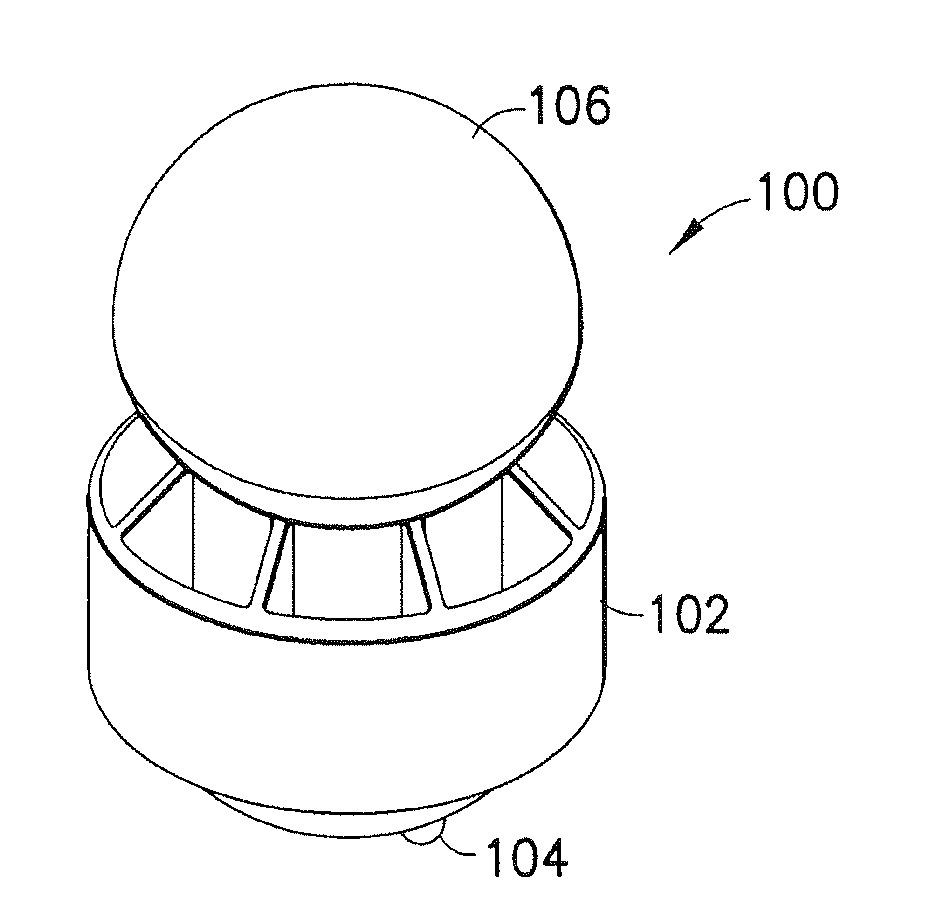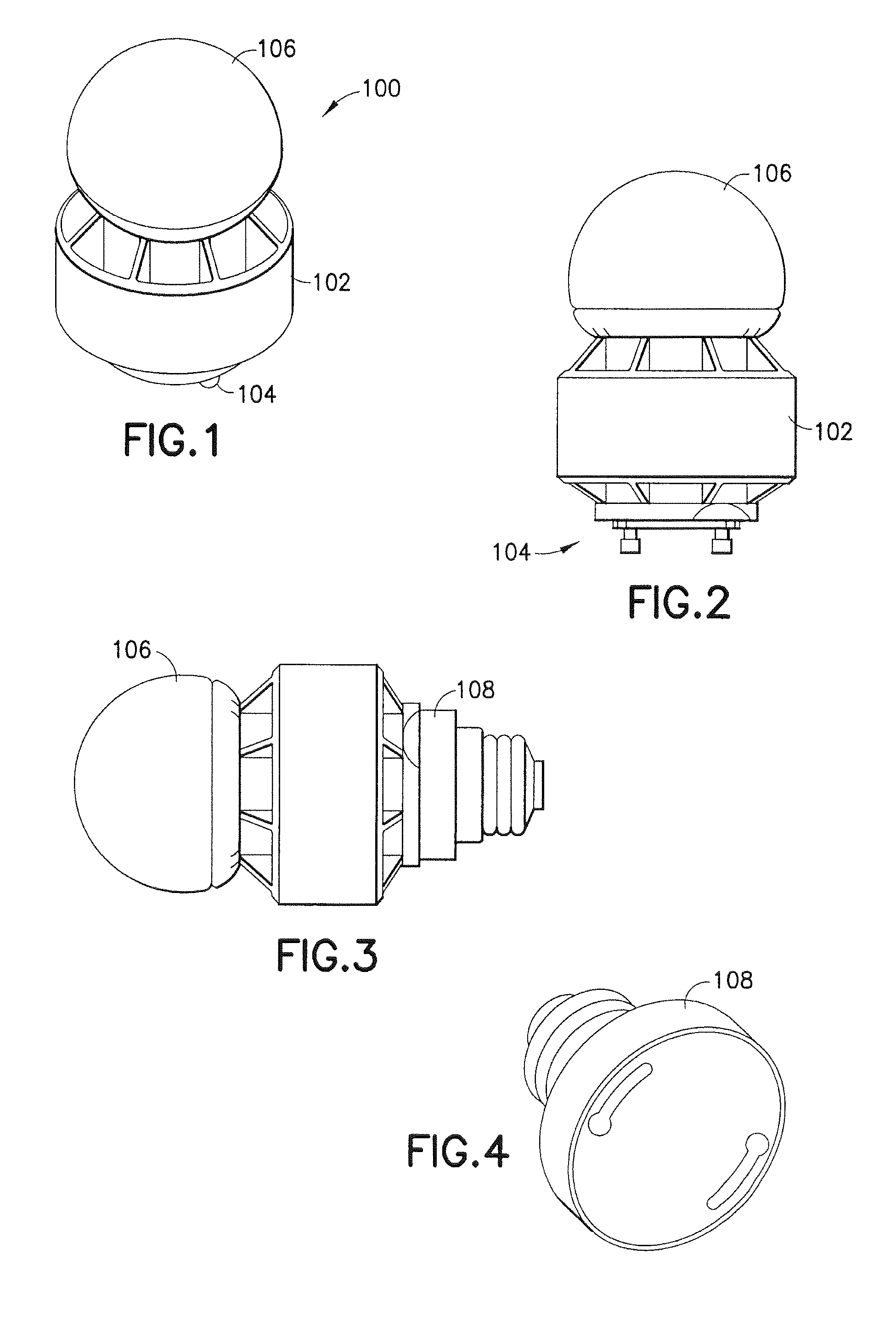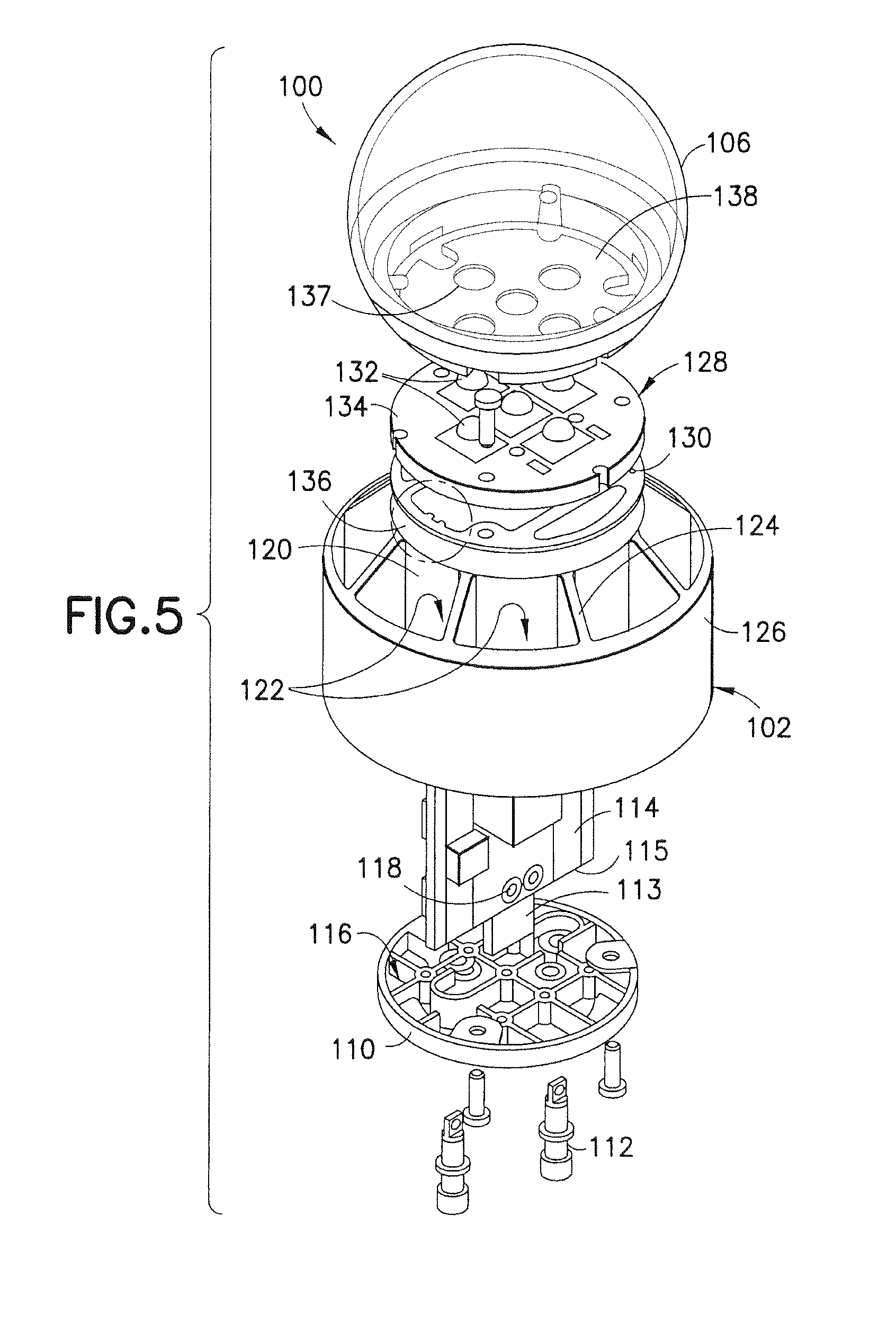LED retrofit light engine
a technology of led light engine and retrofitting, which is applied in the direction of fixed installation, lighting and heating apparatus, lighting support devices, etc., can solve the problems of repetitive replacement cost, increase energy cost, short life, etc., and achieve the effect of enhancing the aesthetics of led light engine, high thermal conductivity material, and increasing airflow
- Summary
- Abstract
- Description
- Claims
- Application Information
AI Technical Summary
Benefits of technology
Problems solved by technology
Method used
Image
Examples
Embodiment Construction
[0038]Preferred embodiments of the present disclosure will be described herein below with reference to the accompanying figures. In the following description, well-known functions or constructions are not described in detail to avoid obscuring the invention in unnecessary detail. Throughout the drawings / figures, like reference numerals represent like elements.
[0039]Referring to FIG. 1, an embodiment of the LED light engine 100 of the present disclosure is illustrated as a replacement for a traditional A19 incandescent or CFL lamp. The LED light engine is intended to provide a much more energy efficient and reliable alternative to an incandescent or CFL bulb. It is designed to provide approximately 500 lumens of light energy, while consuming only 10 Watts, to replace the equivalent illumination performance of a 75 W (1000 lumen) A19 bulb as installed in a typical light fixture. This is achieved by controlling (narrowing) the luminous intensity profile as compared to a standard A19 or...
PUM
 Login to View More
Login to View More Abstract
Description
Claims
Application Information
 Login to View More
Login to View More - R&D
- Intellectual Property
- Life Sciences
- Materials
- Tech Scout
- Unparalleled Data Quality
- Higher Quality Content
- 60% Fewer Hallucinations
Browse by: Latest US Patents, China's latest patents, Technical Efficacy Thesaurus, Application Domain, Technology Topic, Popular Technical Reports.
© 2025 PatSnap. All rights reserved.Legal|Privacy policy|Modern Slavery Act Transparency Statement|Sitemap|About US| Contact US: help@patsnap.com



